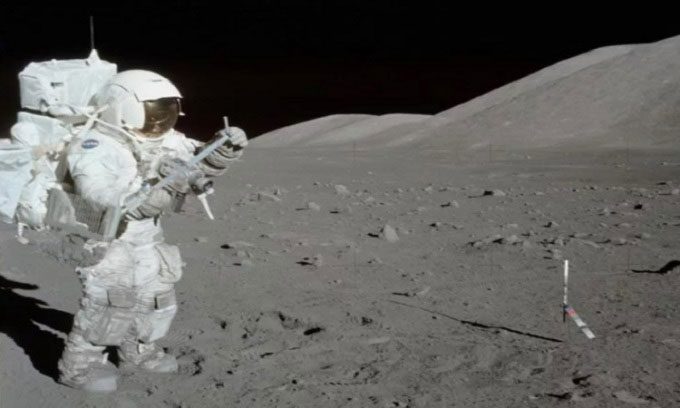Astronaut Harrison H. Schmitt is the only scientist who has walked on the Moon and has an allergy to its dust.
Schmitt discovered his allergy on the return trip to the lunar module. He walked on the Moon in December 1972, during the last crewed mission to the Moon before the Apollo program ended. While on the lunar surface, the geologist spent time collecting rock and soil samples around the Taurus-Littrow valley, near the Sea of Serenity. Upon removing his spacesuit in the lunar module, Schmitt came into contact with the Moon dust that had settled around the cabin.

Harrison H. Schmitt collecting lunar samples during Apollo 17. (Photo: NASA)
“The first time I smelled the dust, I had an allergic reaction; my nose swelled up. You can tell by my voice. But gradually the allergy went away. By the fourth time inhaling lunar dust, I no longer noticed it,” Schmitt recounted.
Schmitt is not the only one who experienced an allergy to lunar dust. A surgeon had to stop working when he removed his spacesuit in the command module due to the severity of his reaction. According to Schmitt, this issue could significantly impact future missions. “For some individuals, we need to find out if they are allergic when exposed to lunar dust for extended periods,” the scientist emphasized.
All other astronauts experienced “lunar allergic rhinitis” to some extent, according to the European Space Agency (ESA). The symptoms they experienced included mild sneezing and nasal congestion, which quickly resolved, although they could occasionally last a few days.
Researchers are seeking solutions to what might be a more serious allergy due to static electricity. On Earth, soil dust particles become smooth due to erosion from wind and water, whereas on the Moon, due to the absence of such conditions, the dust is very sharp and jagged. The Moon lacks an atmosphere to shield against radiation, so the surface dust carries static electricity, sometimes causing dust particles to become airborne, making it easier for them to coat equipment and enter human lungs.
The size of lunar dust particles is particularly concerning and needs to be addressed when sending astronauts back to the Moon. Dust particles smaller than 50 times the diameter of a human hair can remain in the lungs for months, according to Kim Prisk, a pulmonary physiologist studying space flight. The longer the dust stays, the greater the harmful effects.





















































